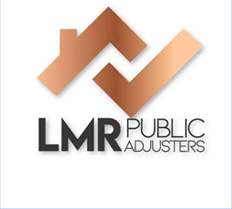Smoke damage can silently destroy your electronics, leaving you with costly repairs and confusing insurance paperwork. How do you handle claims for smoke-damaged electronics without getting shortchanged? At LMR Public Adjusters, we help South Florida homeowners and businesses navigate these tricky claims with confidence. Our dedicated team ensures you get the compensation you deserve—no recovery, no fee.
The process starts with identifying the extent of the damage, documenting everything, and filing your claim correctly. We’ll walk you through how smoke affects electronics, what insurance typically covers, and how to present a strong case. You’ll also learn how our experts at LMR Public Adjusters can step in to negotiate with insurers on your behalf.
But that’s just the beginning. Industry leaders like insurance expert David Charles, with over 25 years in claims management, stress the importance of professional help in complex cases like these. So, if you’re ready to protect your investment and avoid costly mistakes, let’s dive into the essential steps for handling smoke-damaged electronics claims the right way.
Understanding Smoke Damage in Electronics
Smoke damage in electronics occurs when airborne particles from combustion settle inside delicate components. These particles often carry corrosive chemicals and conductive residues. Once inside, they can short-circuit circuits, degrade insulation, and corrode metal parts. Smoke infiltrates through vents, fans, and even microscopic gaps in device casings.
Different types of smoke affect electronics in unique ways. Wood smoke contains organic compounds that leave sticky residues. Plastic fires release toxic, acidic particles that accelerate corrosion. Electrical fires produce fine, conductive soot that can cause immediate shorting. Each type poses a serious threat to internal circuitry.
Commonly affected devices include televisions, computers, routers, and gaming consoles. These electronics often run continuously, drawing in smoke through cooling systems. Over time, even light exposure can lead to performance issues or total failure.
If your home or business has suffered fire damage, it’s crucial to assess all electronics. Visit our property claims page for help navigating the process. You can also learn more about our team on the about us page. Acting quickly can prevent further damage and increase the chances of successful recovery.
Identifying Signs of Smoke Damage
Smoke-damaged electronics often show clear physical signs. Look for yellowing or black soot on vents, screens, or ports. A persistent burnt odor is another strong indicator. Residue may also collect around buttons or seams. Beyond appearance, performance issues can signal internal damage. Devices may overheat quickly, shut down unexpectedly, or fail to power on entirely. Short circuits are common and can worsen if ignored.
Before inspecting, unplug the device and wear gloves. Use a flashlight to check for soot inside vents or near circuit boards. Avoid using compressed air, as it may push particles deeper. Never power on a device that shows signs of internal damage. Doing so can cause permanent failure or even fire.
If you’re unsure, seek a professional evaluation. Experts can assess the extent of damage without risking further harm. For more guidance, explore our property claims page or learn about our team on the about us section. Acting quickly can prevent costly replacements and ensure your claim is handled properly.
Immediate Steps to Take After Smoke Exposure
First, cut the power to all affected electronics. Unplug each device carefully to avoid electrical hazards. Never touch wet or hot equipment. If safe, move the items to a dry, well-ventilated area. This helps reduce moisture buildup and further smoke penetration. Avoid turning on or testing any device. Doing so can cause short circuits or permanent damage.
Do not attempt to clean the electronics yourself. Smoke residue contains corrosive particles that require professional handling. Instead, document the damage with clear photos from multiple angles. This step supports your insurance claim later. Store the devices in sealed containers or anti-static bags if available.
Contact a licensed technician for inspection before any use. Meanwhile, review your insurance policy and begin the claims process. For guidance, explore our property claims resources. You can also learn more about our team on the about us page.
Acting quickly and cautiously can prevent irreversible damage. Always prioritize safety and professional support over DIY fixes.
Documenting the Damage for Insurance Claims
Accurate documentation is crucial when filing an insurance claim for smoke-damaged electronics. Start by capturing clear photos and videos of each affected item. Include close-ups that show visible damage, discoloration, or residue. Record serial numbers and model details to verify ownership. If available, attach original receipts or proof of purchase.
Create a written report that outlines the incident. Mention the date, time, and cause of the smoke exposure. Describe how each device was affected and whether it still functions. Use specific terms like “screen distortion” or “burnt odor” to strengthen your claim.
Organize all materials in a digital folder. Label files clearly for easy access. This will streamline communication with your insurer and reduce delays. Consider backing up your documentation on cloud storage.
For more guidance, visit our FAQ section or explore our insights on blog-page. Proper documentation can significantly improve your chances of a successful claim. Don’t wait—start gathering evidence as soon as damage occurs.
Understanding Insurance Coverage for Smoke-Damaged Electronics
Most homeowner’s and renter’s insurance policies cover smoke damage, including harm to electronics. However, coverage depends on the policy type and cause of the damage. If the smoke results from a covered peril, like a house fire, your electronics may qualify for reimbursement.
Policies typically offer either replacement cost or actual cash value. Replacement cost pays for a new item of similar kind and quality. Actual cash value deducts depreciation, often resulting in a lower payout. Understanding this difference is crucial when filing a claim.
Some policies include exclusions or limitations. For instance, damage from long-term exposure or negligence may not be covered. Additionally, certain high-value electronics might require scheduled coverage.
Always review your policy’s fine print. If you’re unsure, speak with a licensed insurance agent for clarity. They can help you understand what’s covered and what’s not.
For more guidance, visit our FAQ section or explore our property claims page. Being informed helps you avoid surprises during the claims process.
Filing a Smoke Damage Claim
Start by reviewing your insurance policy to confirm smoke damage is covered. Then, document all affected electronics with clear photos and detailed notes. Contact your insurer immediately to report the damage and request a claim number. Be concise and factual when describing the incident. Avoid speculation.
Next, complete all claim forms accurately. Double-check for missing information before submission. Include receipts, warranties, and repair estimates. Submit everything before the deadline to avoid delays. Keep copies of every document you send.
When speaking with the insurance adjuster, stay calm and professional. Stick to the facts and avoid emotional language. Ask for written confirmation of all discussions. If possible, communicate via email to maintain a clear record.
Organize all correspondence, including emails, letters, and phone call summaries. Store them in one place for easy access. This will help if disputes arise later.
For more guidance, visit our property claims page or explore our blog for expert tips. Staying organized and proactive increases your chances of a successful claim.
Working with Restoration Professionals
Electronics restoration specialists play a critical role after smoke damage. They assess, clean, and recover devices affected by soot and heat. Using advanced tools, they remove corrosive particles and stabilize internal components. This process helps prevent further deterioration and data loss.
Restoration begins with a detailed inspection. Experts then disassemble devices, clean circuit boards, and test functionality. If the damage is extensive, they may recommend replacement instead. Restoration is often viable for lightly damaged items, especially when addressed quickly.
Choosing a reputable company is essential. Look for certifications, experience, and positive Google reviews. Ask about their process, success rate, and warranty on restored items. Avoid companies that promise results without proper inspection.
In some cases, replacement is more cost-effective. Devices with melted components or severe corrosion may not be salvageable. A professional can help you decide based on the extent of damage and device value.
For more help navigating your claim, visit our property claims page. If your home suffered broader damage, explore our home damage resources. Acting fast can make all the difference in recovery.
Estimating Repair vs. Replacement Costs
Determining whether to repair or replace smoke-damaged electronics depends on several key factors. Start by assessing the device’s age and current market value. If the item is outdated or nearing the end of its lifespan, replacement may be more cost-effective. Next, evaluate the extent of the smoke damage. Minor soot exposure might be cleaned, but internal corrosion often leads to long-term failure.
Compare repair estimates with the cost of a new unit. For example, repairing a smoke-damaged television might cost $300, while a new one of similar quality could be $500. In this case, replacement offers better value. However, high-end electronics like servers or custom systems may justify repair if replacement costs exceed $1,000.
Always request multiple quotes from certified technicians. This ensures accurate pricing and helps avoid unnecessary expenses. Don’t forget to factor in warranty coverage and insurance claim limits.
For more guidance, explore our property claims process or visit our FAQ page. Making informed decisions now can save you thousands later.
Preventing Future Smoke Damage
Installing reliable smoke detectors and fire alarms is your first line of defense. Place them near electronics and high-risk areas. Test devices monthly and replace batteries twice a year. Proper storage of electronics also reduces risk. Keep devices away from flammable materials and ensure adequate ventilation. Avoid overloading power strips or using damaged cords.
Practice fire safety daily. Never leave electronics charging unattended. Turn off devices when not in use. In offices, assign someone to monitor electrical safety protocols. Schedule regular inspections of your electrical systems. Hire licensed professionals to check for faulty wiring or overloaded circuits.
Routine maintenance prevents small issues from becoming disasters. Clean dust from vents and fans to avoid overheating. If you’ve experienced past damage, consider reviewing our property claims process for guidance. For more tips, visit our blog page.
Taking these steps not only protects your electronics but also ensures peace of mind. Prevention is always more cost-effective than recovery. Stay proactive and safeguard your home or office today.
Frequently Asked Questions (FAQs)
Electronics with cooling fans, such as computers and gaming consoles, are especially vulnerable to smoke damage. Smoke particles infiltrate internal components, causing corrosion and overheating. While DIY cleaning may seem tempting, it often worsens the damage. Always consult a professional before attempting any restoration.
Most insurance policies require claims to be filed within a specific timeframe—typically 30 to 60 days. Delaying can jeopardize your eligibility. Filing a claim doesn’t always mean your premium will increase, but it depends on your provider and claim history.
If your claim is denied, request a detailed explanation. You can then appeal or hire a public adjuster to fight on your behalf. To prove smoke damage, document everything—photos, receipts, and expert evaluations are key.
Warranties often exclude smoke damage, so check your terms carefully. Even if devices appear functional, smoke can cause long-term issues like short circuits. If you smell smoke but see no damage, unplug the device and seek inspection immediately.
To find a certified specialist, check reviews and credentials. Visit our About Us page to learn how we can help restore your electronics and secure your claim.



